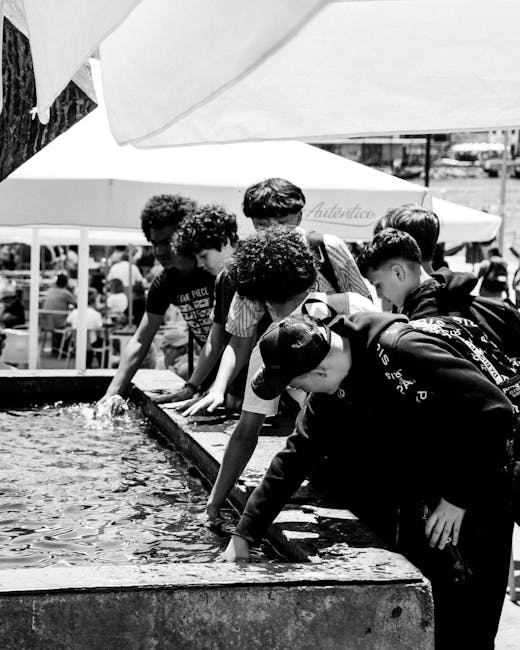Long ago, in a humble village under a starlit sky, a young couple welcomed a child in a stable. This child, born to bring hope, was celebrated not with grand feasts but with simple acts of kindness. Villagers gathered, sharing stories and gifts crafted from the heart. They lit candles to symbolize the light he would bring to the world. Thus, the original idea of Christmas blossomed—not in extravagance, but in love, unity, and the joy of giving. Each year, they remembered that night, rekindling the spirit of togetherness.
Table of Contents
- Exploring the Historical Roots of Christmas Traditions
- The Evolution of Christmas Celebrations Through the Ages
- Cultural Influences Shaping the Modern Christmas Experience
- Rediscovering the Spirit of Christmas: Recommendations for Meaningful Celebrations
- Q&A

Exploring the Historical Roots of Christmas Traditions
The celebration of Christmas, as we know it today, is a tapestry woven from various cultural and religious threads. Its origins can be traced back to ancient winter solstice festivals, where communities gathered to celebrate the return of longer days and the promise of spring. The **Roman festival of Saturnalia**, held in mid-December, was characterized by feasting, gift-giving, and a spirit of merriment that permeated society. Similarly, the **Norse Yule** traditions involved lighting fires and feasting to honor the rebirth of the sun. These early celebrations laid the groundwork for the festive atmosphere that surrounds Christmas, blending pagan customs with emerging Christian beliefs.
As Christianity spread throughout Europe, the Church sought to incorporate these existing traditions into its own narrative. The birth of Jesus Christ, celebrated on December 25th, was strategically aligned with these winter festivities, allowing for a smoother transition for converts. Over time, various customs evolved, such as the **use of evergreen trees** symbolizing eternal life, and the **tradition of caroling**, which echoes the joyous proclamations of the angels at Christ’s birth. The melding of these practices not only enriched the holiday but also created a unique cultural phenomenon that continues to evolve, reflecting the diverse ways in which communities celebrate the spirit of giving, hope, and renewal during the winter season.

The Evolution of Christmas Celebrations Through the Ages
The roots of Christmas can be traced back to ancient traditions that celebrated the winter solstice, a time when communities gathered to mark the return of longer days and the promise of spring. Early festivities often included **feasting**, **gift-giving**, and **rituals** aimed at ensuring a bountiful harvest in the coming year. As Christianity began to spread, these pagan customs were gradually absorbed into the celebration of the birth of Jesus Christ, transforming the holiday into a blend of sacred and secular practices. The date of December 25th was chosen to coincide with existing winter celebrations, allowing for a smoother transition and acceptance among diverse cultures.
Throughout the centuries, Christmas evolved significantly, influenced by various cultural and regional practices. In medieval Europe, the holiday became a time for **merriment**, with traditions such as **caroling** and **mumming** taking center stage. The introduction of the Christmas tree in the 16th century, along with the custom of hanging stockings, further enriched the holiday’s tapestry. By the Victorian era, Christmas had transformed into a family-centered celebration, emphasizing **charity**, **togetherness**, and the spirit of giving. This evolution reflects a broader societal shift, where the holiday became a symbol of hope and joy, transcending its original religious connotations to embrace a more universal message of goodwill.

Cultural Influences Shaping the Modern Christmas Experience
The modern Christmas experience is a vibrant tapestry woven from various cultural threads, each contributing to the rich traditions we celebrate today. **European customs**, such as the Yule log and the Christmas tree, have found their way into homes around the world, symbolizing warmth and festivity. Meanwhile, **American influences** have introduced elements like Santa Claus, inspired by St. Nicholas, and the concept of gift-giving, which has evolved into a central theme of the holiday. These practices reflect a blend of ancient rituals and contemporary values, showcasing how cultures adapt and reinterpret traditions over time.
Additionally, **globalization** has played a significant role in shaping the Christmas experience, allowing diverse cultural practices to intermingle. For instance, **Latin American traditions** bring vibrant celebrations like Las Posadas, while **Asian influences** introduce unique culinary delights and festive decorations. The result is a holiday that transcends geographical boundaries, embracing a multitude of customs that enrich the overall experience. As families gather to celebrate, they often blend these influences, creating a personalized holiday that honors both heritage and modernity.

Rediscovering the Spirit of Christmas: Recommendations for Meaningful Celebrations
As we delve into the essence of the holiday season, it becomes essential to embrace traditions that foster connection and joy. Consider hosting a **community potluck**, where friends and neighbors come together to share their favorite dishes, creating a tapestry of flavors and stories. This simple act of sharing not only nourishes the body but also strengthens the bonds of community. Additionally, **volunteering at local shelters** or organizing a charity drive can reignite the spirit of giving, reminding us of the importance of compassion and generosity during this festive time.
Another way to celebrate meaningfully is by creating **personalized holiday rituals** that resonate with your family’s values. This could include crafting handmade ornaments that tell your family’s story or writing heartfelt letters to each other, expressing gratitude and love. Engaging in **nature walks** to appreciate the beauty of winter can also provide a serene backdrop for reflection and connection. By focusing on these enriching experiences, we can transform the holiday season into a time of genuine celebration, honoring the true spirit of togetherness and goodwill that Christmas embodies.
Q&A
-
What is the historical origin of Christmas?
The original idea of Christmas is rooted in the celebration of the birth of Jesus Christ, which is believed to have occurred around 4 BC. Early Christians began celebrating this event in the 4th century AD, choosing December 25th to coincide with existing pagan festivals that honored the winter solstice.
-
How did pagan traditions influence Christmas?
Pagan traditions significantly influenced Christmas celebrations. Many customs, such as decorating with evergreen trees, feasting, and gift-giving, were adapted from ancient winter solstice festivals like Saturnalia and Yule, which celebrated the return of longer days and the rebirth of the sun.
-
What role did St. Nicholas play in the development of Christmas?
St. Nicholas, a 4th-century bishop known for his generosity, became a central figure in Christmas lore. His legendary acts of kindness, particularly giving gifts to the needy, laid the groundwork for the modern-day Santa Claus, blending Christian values with festive traditions.
-
How has the meaning of Christmas evolved over time?
Over the centuries, the meaning of Christmas has evolved from a strictly religious observance to a broader cultural celebration. Today, it encompasses themes of family, goodwill, and community, often emphasizing secular traditions alongside its Christian roots.
As we unwrap the layers of Christmas’s origins, we discover a tapestry woven with history, culture, and belief. This festive season invites us to reflect on its true essence, reminding us that the spirit of giving and togetherness transcends time.

大家好,我是彼得潘,專業的手法身體治療師。我喜歡探索和研究各種主題,並透過與人工智慧的合作分享專業、實用、有趣的文章。我們定期進行人工審核,以確保內容的準確性。如果您發現文章中有任何不準確的地方,請隨時與我們聯繫,我們會及時糾正。您可以透過 [email protected] 與我們聯繫。



